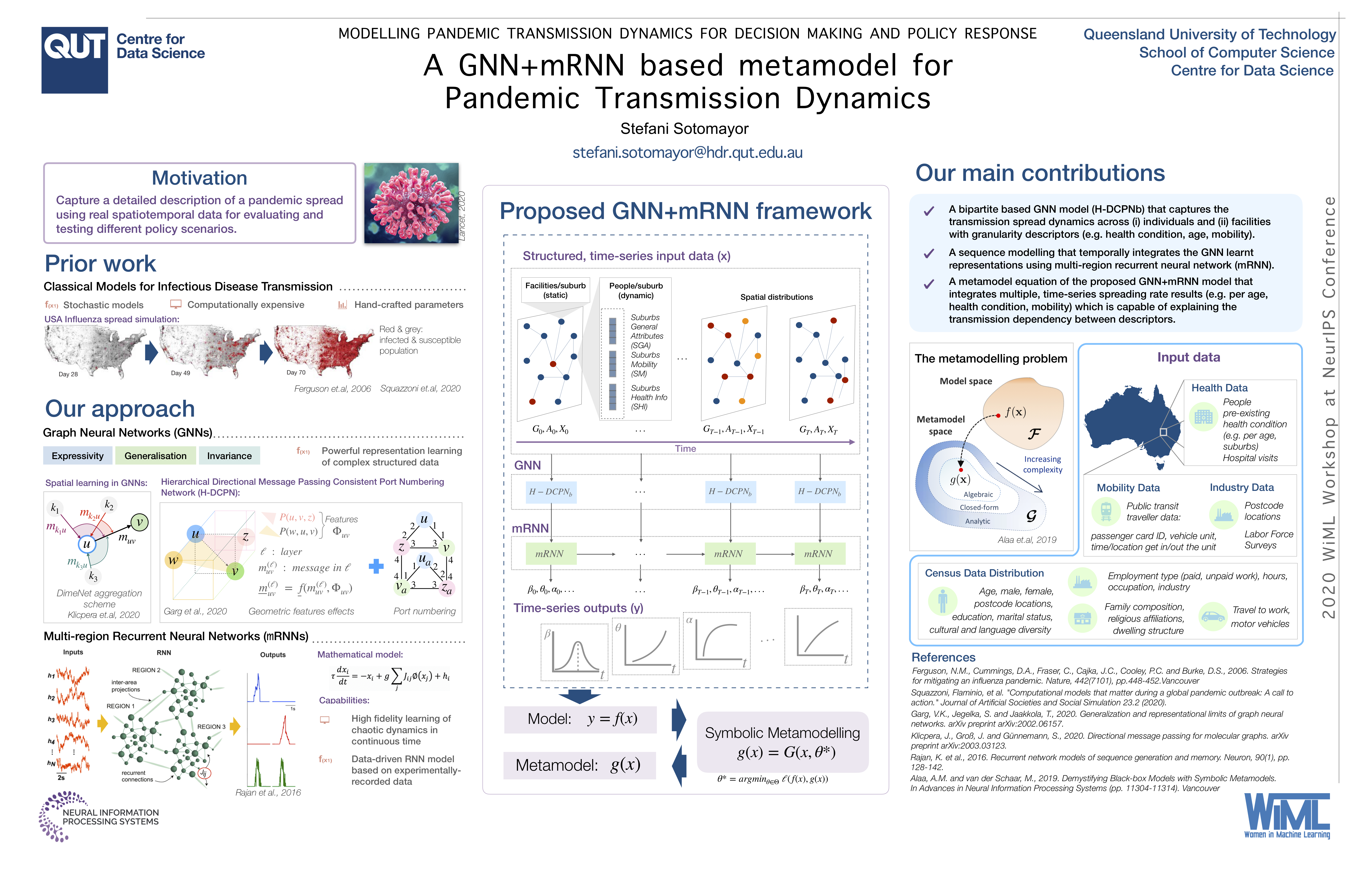Research Focus 1: Epidemic Modelling
Neural networks for epidemic modelling
The COVID-19 pandemic has recently driven the development of computational frameworks for modeling its transmission dynamics in an attempt to provide policy makers a reliable system for decision making. However, classical agent-based models do not consider enough information and therefore cannot capture meaningful risk variables nor policy measures responses from population [3]. On the other hand, classical network-based models cannot replicate people interactions in real scenarios. Current machine learning methods, conversely,show promising results by modelling network structures and dynamic behaviors of such complex systems as spatiotemporal chaotic systems [1].
Moreover, recently work onexploring epidemic threshold behavior using deep learning models promotes further research in time-varying and multiplex networks for model scalability [2]. In this research, we propose to develop a hybrid approach to representthe spatiotemporal dynamics of a pandemic spread, using graph neural networks to model the fine-grained data features and the people social responses from specific local conditions, capturing the heterogeneous social links on diffusion patterns.
Particularly, my work focuses on people distribution and mobility behaviour analysis along a specific space/time dimension. My recent poster describes the application of artificial neural networks, GNN + mRNN, to represent a heterogeneous population using symbolic metamodelling approaches to explain the epidemic transmission dependency between descriptors, presented at the 34th Conference on Neural Information Processing Systems (NeurIPS 2020) , 15th Women in Machine Learning Workshop (WiML 2020).

More details on my current research project Data-driven Pandemic Response funded by the QUT Centre for Data Science can be found here .
References
[1] Tang, Yang, et al. "Introduction to Focus Issue: When machine learning meets complex systems: Networks, chaos, and nonlinear dynamics." Chaos: An Interdisciplinary Journal of Nonlinear Science 30.6 (2020): 063151.
[2] Ni, Qi, et al. "Learning epidemic threshold in complex networks by Convolutional Neural Network." Chaos: An Interdisciplinary Journal of Nonlinear Science 29.11 (2019): 113106.
[3] Squazzoni, Flaminio, et al. "Computational models that matter during a global pandemic outbreak: A call to action." Journal of Artificial Societies and Social Simulation 23.2 (2020).



